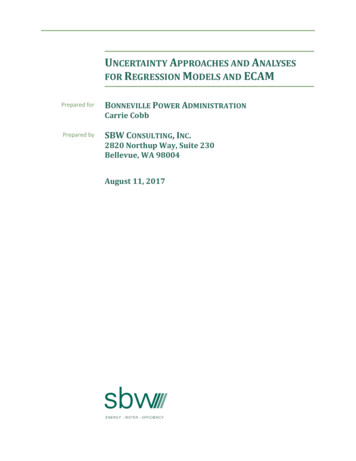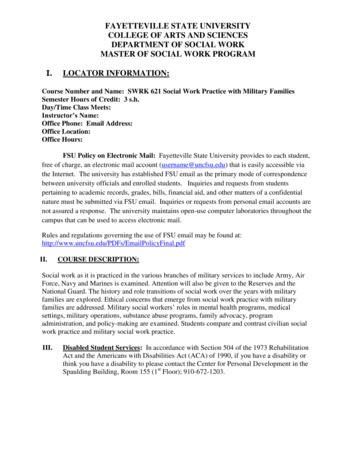
Transcription
LECTURE 4OOP in Python
SCOPING RULES Before we start, let’s talk about how name resolution is done in Python: When afunction executes, a new namespace is created (locals). New namespaces can also becreated by modules, classes, and methods as well. LEGB Rule: How Python resolves names. Local namespace. Enclosing namespaces: check nonlocal names in the local scope of any enclosingfunctions from inner to outer. Global namespace: check names assigned at the top-level of a module file, or declaredglobal in a def within the file. builtins : Names python assigned in the built-in module. If all fails: NameError.
FUNCTIONS AS FIRST-CLASS OBJECTS We noted a few lectures ago that functions are first-class objects in Python. Whatexactly does this mean? In short, it basically means that whatever you can do with a variable, you can do witha function. These include: Assigning a name to it. Passing it as an argument to a function. Returning it as the result of a function. Storing it in data structures. etc.
FUNCTION CLOSURES As first-class objects, you can wrapfunctions within functions. Outer functions have free variables thatare bound to inner functions. A closure is a function object thatremembers values in enclosing scopesregardless of whether those scopes arestill present in memory.
CLOSURESClosures are hard to define so follow these three rules for generating a closure:1. We must have a nested function (function inside a function).2. The nested function must refer to a value defined in the enclosing function.3. The enclosing function must return the nested function.
OOP IN PYTHON Python is a multi-paradigm language and, as such, supports OOP as well as a varietyof other paradigms. If you are familiar with OOP in C , for example, it should be very easy for you topick up the ideas behind Python’s class structures.
CLASS DEFINITION Classes are defined using the class keyword with a very familiar structure:class ClassName (object):statement1 statementN There is no notion of a header file to include so we don’t need to break up thecreation of a class into declaration and definition. We just declare and use it!
CLASS OBJECTS Let’s say I have a simple class which does not much of anything at all.class MyClass(object):""""A simple example class docstring"""i 12345def f(self):return 1 I can create a new instance of MyClass using the familiar function notation.x MyClass()
CONSTRUCTORS We can define the special method init () which is automatically invoked for newinstances (initializer).class MyClass(object):"""A simple example class""“i 12345def init (self):print "I just created a MyClass object!"def f(self):return 'hello world'
DATA ATTRIBUTES Like local variables in Python, there is no need for a data attribute to be declaredbefore use. A variable created in a class is a static variable. To make instance variables, they need to be prefixed with “self”. This is especiallyevident with mutable artibutes. We can add, modify, or delete attributes at will. There are also some built-in functions we can use to accomplish the same tasks.
BUILT-IN ATTRIBUTES Besides the class and instance attributes, every class has access to the following: dict : dictionary containing the object’s namespace. doc : class documentation string or None if undefined. name : class name. module : module name in which the class is defined. This attribute is " main " in interactive mode. bases : a possibly empty tuple containing the base classes, in the order of theiroccurrence in the base class list.
PRIVATE VARIABLES There is no strict notion of a private attribute in Python. However, if an attribute is prefixed with a single underscore (e.g. name), then itshould be treated as private. Basically, using it should be considered bad form as it isan implementation detail. To avoid complications that arise from overriding attributes, Python does performname mangling. Any attribute prefixed with two underscores (e.g. name) and nomore than one trailing underscore is automatically replaced with classname name. Bottom line: if you want others developers to treat it as private, use the appropriateprefix.
INHERITANCE The basic format of a derived class is as follows:class ntN In the case of BaseClass being defined elsewhere, you can use module name.BaseClassName.
OOP IN PYTHON Python is a multi-paradigm language and, as such, supports OOP as well as a variety of other paradigms. If you are familiar with OOP in C , for example, it should be very easy for you to pick up the











